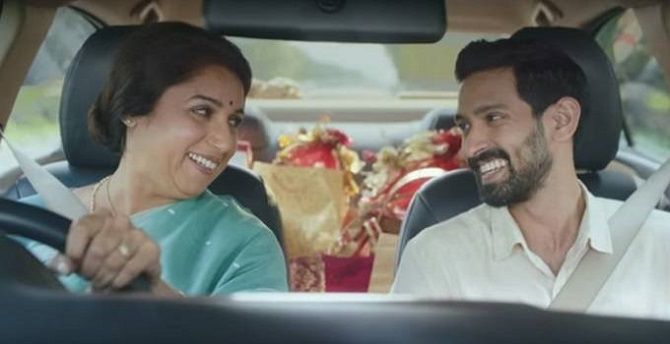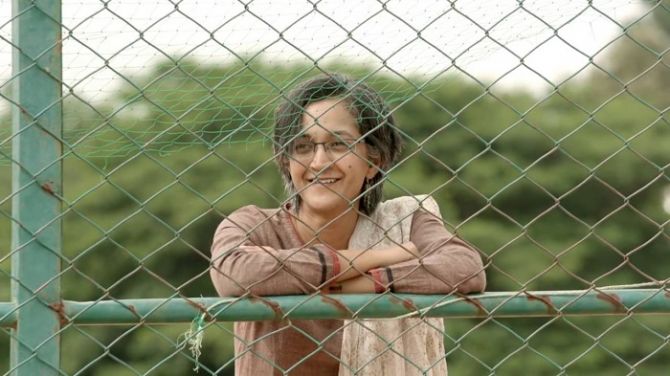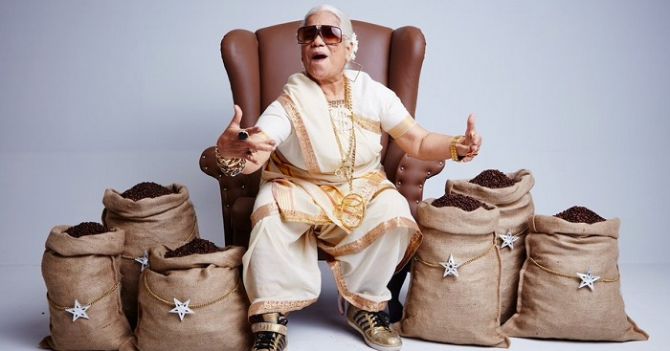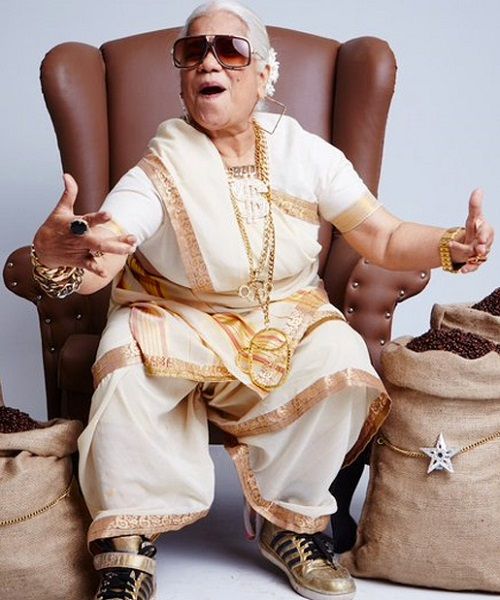60-plus men and women who live independent lives are becoming the cynosure of ad men's eyes.
Viveat Susan Pinto reports.

An elderly mother talks to her adult son about the need to secure his future while home loan rates are down. 'Buy a house,' she says to her son fully aware that it will leave her lonely in the process. The son is taken aback and predictably asks her how she will cope with the loss. The mother says, 'Oh! Don't worry about me. Buy a house close to where we are, it will help you.'
This commercial for Axis Bank's home loan portfolio is currently playing on national television.
But while the banter between mother and son brings a smile to everyone's faces, it also draws attention to something else: The portrayal of the elderly in Indian advertising today.
In the said commercial, the mother drives her own car and pretty much seems to have an independent economic existence. For most middle-class and upper middle-class people in India today, this is a reality; children who've grown up and moved on, leaving them alone.
And the 60-plus men and women who are choosing to live their lives independently are becoming the cynosure of ad men's eyes.

Market researchers label the group as empty nesters, imbuing a certain lifestyle and social standing to their existence.
But to marketers they are a powerful economic force, says N Chandramouli, chief executive officer, TRA, which brings out the annual Brand Trust Report. Advertisers, says Chandramouli, are today left with no choice but to address them appropriately without the clichés that have characterised the portrayal of the elderly for years.
"You no longer have a situation where the elderly at least in urban areas is dependent on their children," he says. "Many of them are fit, have the spending power and also the time to be indulgent."
So, what we now see on television is a new senior, someone who is prepared to enjoy himself or herself without inhibition or fear as consumers saw with the Vodafone Supernet 4G campaign featuring elderly couple Asha and Bala earlier this year. The couple, who are in their 70s, were seen going on their second honeymoon to Goa doing everything from getting a tattoo to parasailing and keeping pace with technology at the same time.

There are more examples of brands using the senior population differently.
A recent campaign for e-commerce major Amazon shows the advertiser addressing mothers with grown-up children, gently coaxing them through their kids to pick up their long-lost passions be it photography, music or skating. Age is no bar for living one's life, the ad seems to say.
Advertisers are also giving seniors a more indulgent lifestyle.
In a recent campaign for Tanishq, the jewellery brand, a husband well into his late 60s is seen gifting a pair of new bangles to his wife to help her celebrate a festival.
"As a nation gets younger, it also gets older," KV Sridhar, founder and chief creative officer, Hyper Collective says. "And given that advertisers today want to be responsible with their advertising. How the elderly are being addressed is one area that they are looking at closely."
This involves tapping into their unmet needs or long-lost passions or the desire to be young at heart, Alpana Parida, managing director, D Y Works, a brand strategy firm says.
"That advertising," says Parida, "is a reflection of society is pushing companies to project the transformation that they are undergoing," she says.
Myth: Dependent on children
Parents are encouraging sons to move out and are living their own lives, independently.
Myth: Retirement is the only option
Bike riding, tattooing, running the marathon, many youthful lifestyle choices are now being thrown open to seniors.
Myth : The old can't navigate the digital world
From using complex commands on their mobile handsets to giving dating tips to grandchildren, the senior generation is doing it all.
The sheer increase in the number of seniors in society is also driving a shift in the ad business.
According to a recent report by the ministry of statistics and implementation, there were 10.38 crore elderly in India based on the 2011 census data versus 7.66 crore a decade ago (2001). This represented a three percentage point increase, with the elderly population according to the 2011 census standing at 8.6 per cent of the total Indian population versus 5.6 per cent a decade ago.
Market researchers say that the numbers are going up rapidly, they could soon surpass the 10-percentage-point-mark in the next few years.
So, not only will categories that depend on the elderly such as pain relievers, banking and insurance, pharma, health care and hospitals use them more aggressively, but even those that do not depend on them such as fast moving consumer goods, auto and telecom will increasingly see the presence of the senior models in dramatically diverse roles.
Many brands have already signed on for the new look.
When launching its instant coffee brand Grand last year, Tata Global Beverages opted to do so with a "rapper granny".
In a recent campaign by direct-to-home major Tata Sky, a grandmother is shown playing Cupid, helping her grandson woo his girl with love tips.
In another commercial for Shell Lubricants, a man is seen living his dream of riding his bike through the countryside, but the model is well into his greys.
Brands are not letting age come in the way of their pursuit of the customer.













 © 2025
© 2025